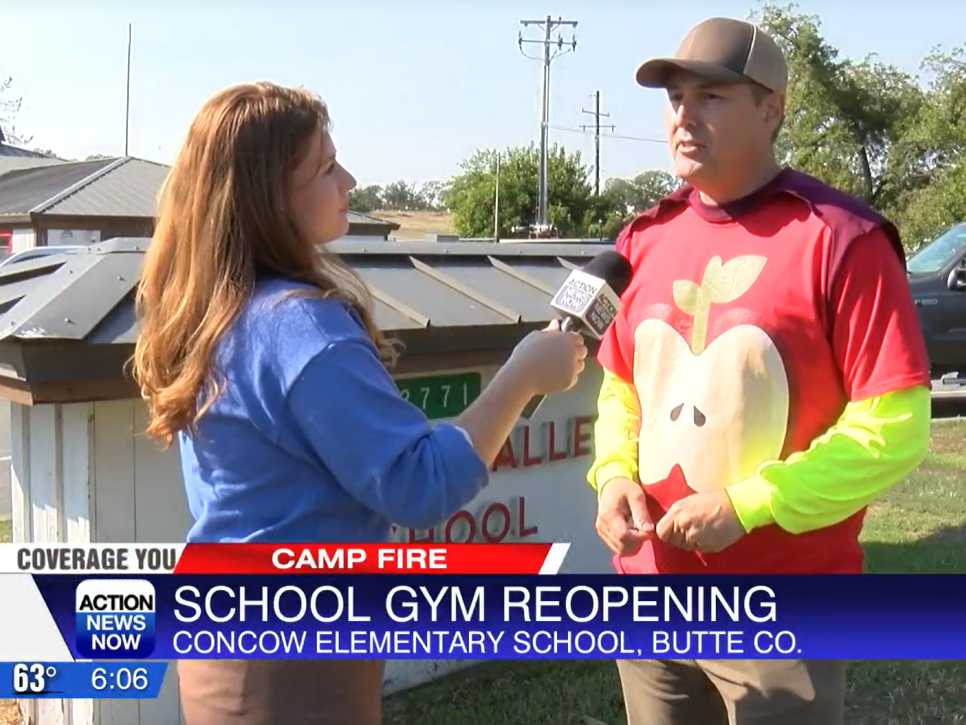School calendars vary by region in the United States. There is an expectation from the community, parents, and some staff for school to start after Labor Day. This feels like an ingrained cultural norm that is broken year after year with stakeholders wishing schools would just stick to the script. Every year as superintendent, I’m asked “Why is school starting in August?” and every year new children enroll after Labor Day no matter how much communication the district puts out in the community.

To answer this question, it’s important to know briefly how school calendars are created. The creation and editing of the school calendar is in the teacher’s union contract. Teachers typically have influence on the calendar because it affects their working conditions. District negotiators and the teacher’s union will settle on the development of the calendar, which is then taken to the school board for approval.
Why Does School Start in August?
In both elementary school districts (TK-8) and unified districts (TK-12), the school calendar is generally synchronized with the high school calendar to ensure consistency and accommodate families with students in different grade levels, taking into account the importance of high school grades and sports in the community.
The simplest answer I have for anyone in an elementary school district (a TK-8 school district without high schools) is that we follow the high school. Yes, it’s simple. You can’t have parents with elementary kids and high school students in the same household having different breaks, drastic differences to the start and end of their year, etc… So typically, elementary school districts look at the high school calendar and shoot for a start date that is close to accommodate families.

For those in unified districts (TK-12th grades) the answer is similar. The teachers will build the unified calendar with the high school students and staff in mind. Since high school grades affect the future of students and high school sports are important in communities, the development process includes great consideration for these facts.
Why Do High Schools Start in August?
High schools often start in August for several practical reasons, including aligning the semester’s end with the December break, optimizing preparation time for college-related matters, addressing attendance issues in June, and accommodating annual state testing, with an additional unofficial benefit being the advantage it provides to athletic programs that can hold extra practices before competing against schools with later start dates.
There are multiple reasons high schools start in August. First, when you start in August the semester ends at the December break. Finals week would be after a two week gap during Christmas/New Year season if the school year started in September. As stated above, grades in high school affect college acceptance and multi-week long breaks before finals may not be a students’ first decision. In some districts, attendance in June is really bad. Some families do not send students to school after Memorial Day. The less days students are required to attend school in June, the better for some communities. Also, annual state testing is typically in May so starting in August gives you more time to prepare. These are some of the main reasons schools start in August, but I feel there is an unofficial reason as well.
Unofficially, football and other fall sports cannot hold official practices until school starts. If one school starts early and they are competing against another school that starts late, there is an advantage for programs that have 2-3 weeks of extra practice. Therefore, athletic departments will want more practices before games. Athletic departments include teachers and teachers are big players in calendar creation.
Why Did School Start in September?
The tradition of schools starting after Labor Day, common in the 1980s and earlier, shifted in the 1990s due to changing educational priorities, economic factors, and the desire to maximize instructional time and align with academic schedules and global competitiveness.
Adults that grew up in 1980’s or before remember school always starting after Labor Day. This is still the case in multiple states across the United States. The practice dates back to the early 20th century where urban and rural district calendars aligned. Most schools were required to have a 180 day calendar and the day after Labor Day was culturally accepted as the start of the school year. This changed in 1990’s.
In the 1990s, there was a significant shift in the school start date in many regions. This transformation was influenced by various factors, including changing educational priorities and economic considerations. As schools began to emphasize standardized testing and academic performance, educators and policymakers looked for ways to maximize instructional time and ensure that students had ample preparation for exams. Additionally, an extended school year became more appealing in the face of concerns about global competitiveness. Economic considerations also played a role, with an earlier school start providing more opportunities for tourism revenue during the summer months, as families could take vacations in August, before school began. These combined factors contributed to the shift away from the traditional post-Labor Day start, marking a significant change in the historical pattern of school calendars.
Is August the New September?
Starting school in August has become a trend due to several reasons, including aligning with standardized testing schedules, avoiding gaps during the December break, accommodating students attending college during the summer, and offering more flexibility in the school year, reflecting the evolving dynamics of modern education and the changing needs of students and families.
Some of the main reasons for making August the new September include providing teachers the most time possible before state testing in May, the first semester ending in December without a two week gap over Christmas break, and some families do not send their children to school after Memorial Day. Also, many students in high school now attend college in the summer and school needs to be out prior to summer session. Lastly, if schools start in June then they can take a “ski week” in February and/or a week off in October.
Moreover, the shift towards starting school in August reflects the evolving dynamics of modern education and the changing needs of students and families. As higher education institutions increasingly offer summer sessions and students pursue year-round learning opportunities, aligning the high school calendar with these trends becomes crucial. By starting school in August and concluding before the summer session begins, students can seamlessly transition from high school to college, ensuring a smoother academic journey. Additionally, the flexibility in scheduling, including the possibility of breaks in February or October, offers a balanced approach to the school year, catering to the diverse needs and interests of both students and educators. As education continues to adapt to the demands of the 21st century, the choice to make August the new September reflects a response to the evolving landscape of learning and the desire to provide students with the best possible educational experience.
Hopefully this helped with:
- Does school start after Labor Day?
- Why does school start before Labor Day?
- When is school starting again?
- Why are schools starting earlier in the year?
Josh Peete, M. Ed. Admin.
- Superintendent Productivity Boost: The Power of a Small Pocket Notebook in Education Leadership
- Inside the World of School District Superintendents: An Experienced Superintendent’s Comprehensive Insights into Roles, Responsibilities, Hiring, Qualifications, Turnover, Selection Process, Contracts, and Requirements
- Superintendent’s Guide to National Disaster Preparedness Month: Equipping Schools for Safety and Resilience
- A Superintendent’s Blueprint for Cultivating Creativity and Growth through Art during National Arts in Education Week and National Arts & Humanities Month
- The Ultimate Guide to National Crayon Collection Month by the Superintendent: Unveiling Secrets, Crayon Recycling, Landfill Impact, Creative Uses, Environmental Awareness, and More



